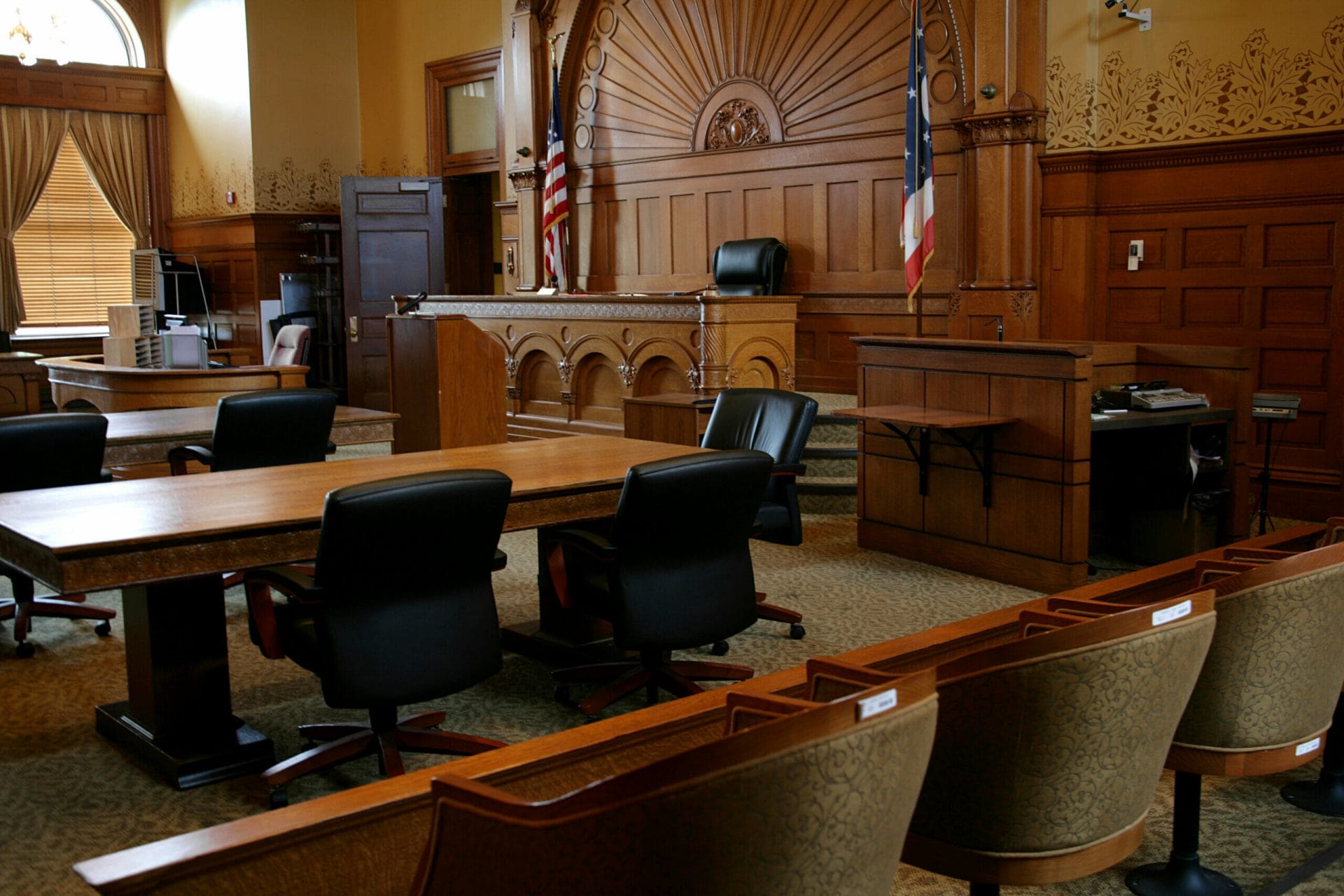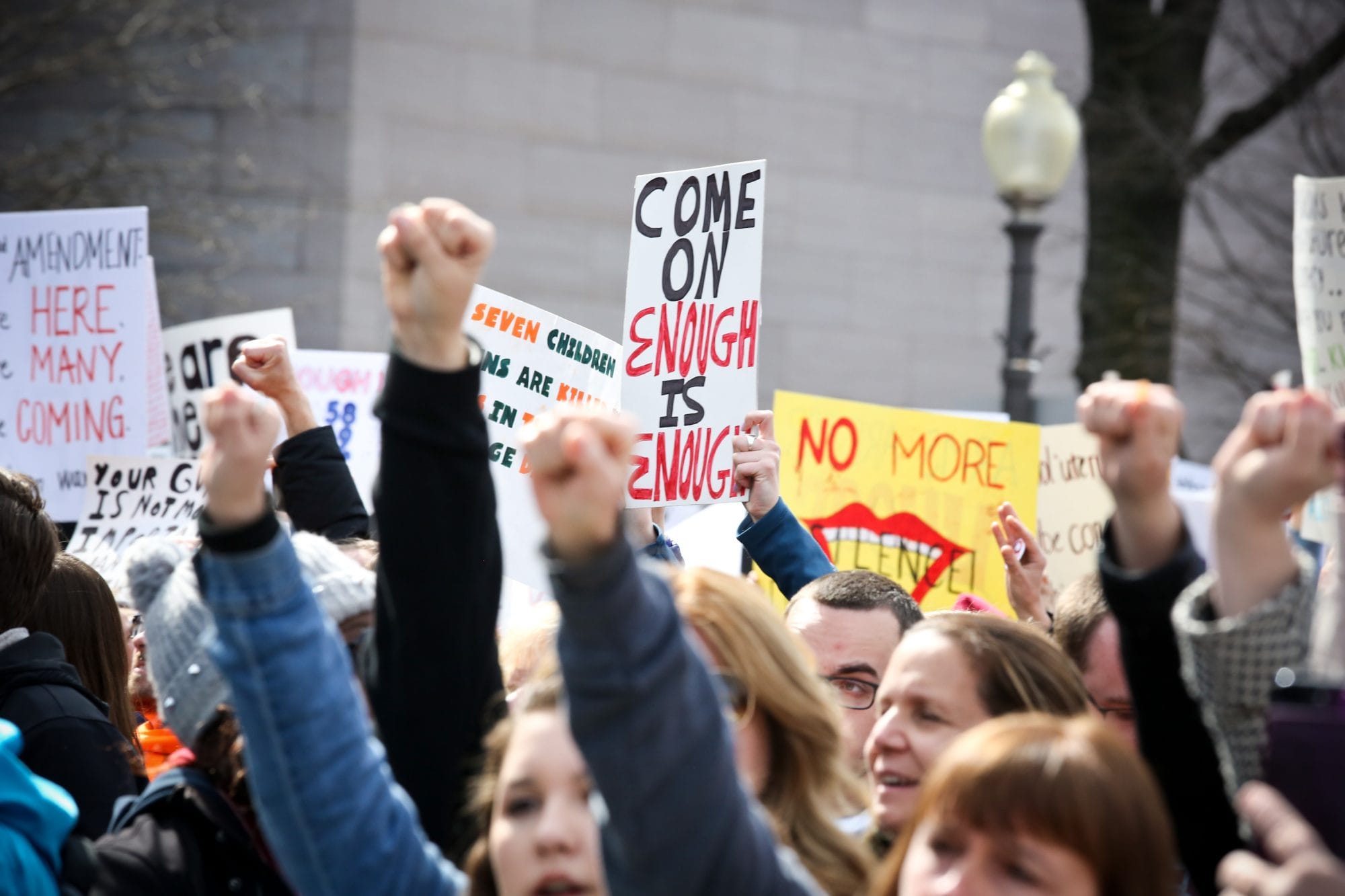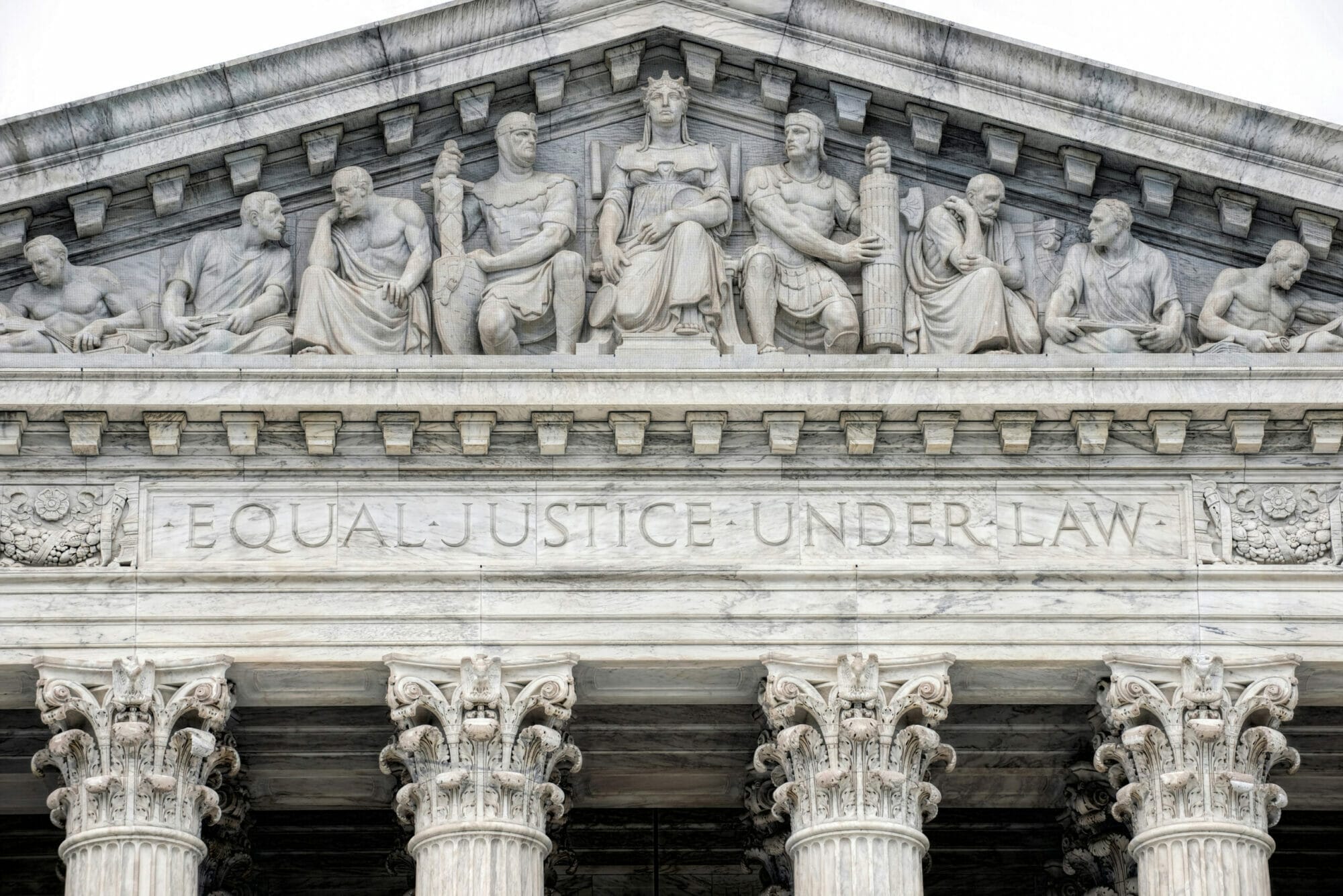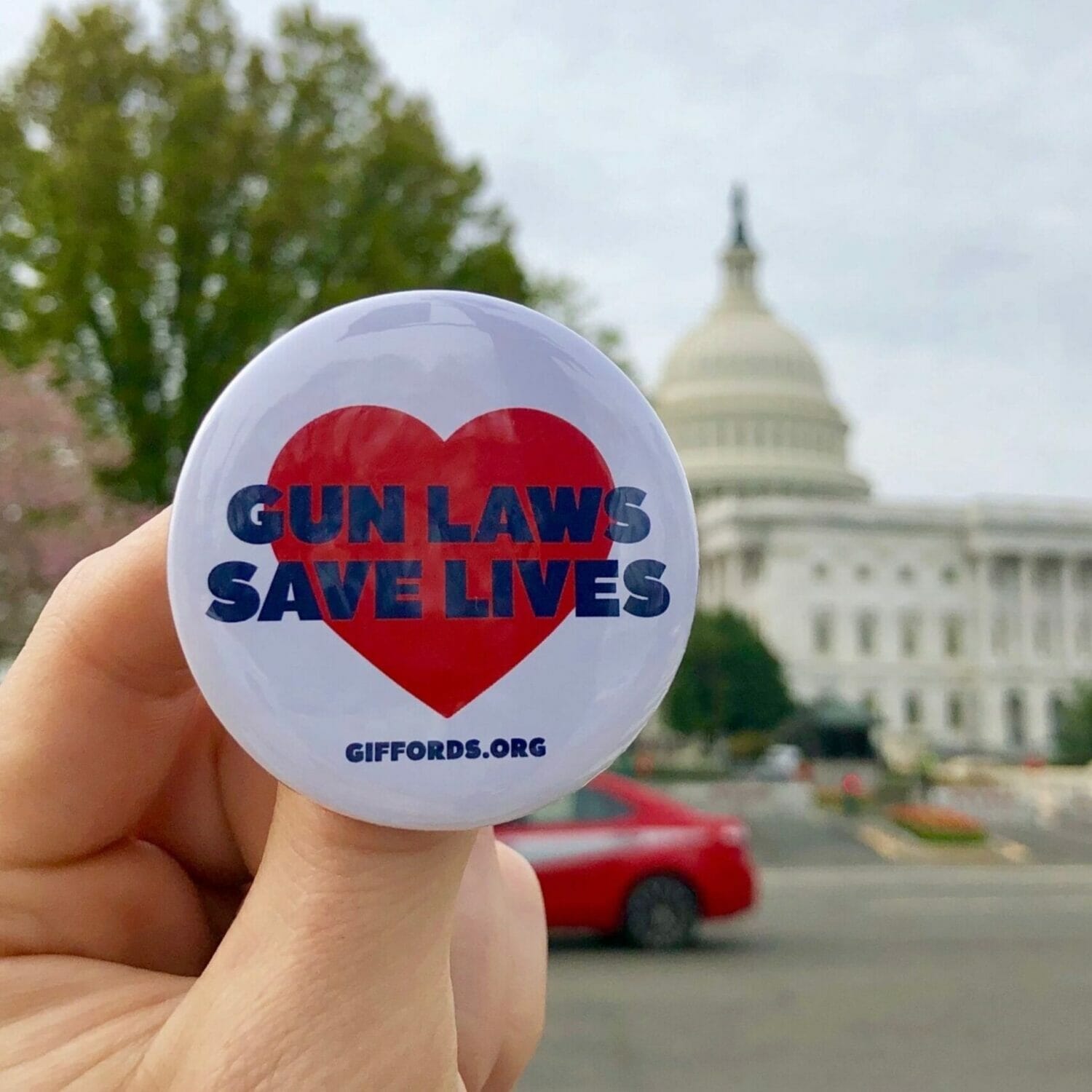
The gun lobby won’t stop pushing its radical interpretation of the Second Amendment in the courts. But we have common sense and evidence on our side, and we’re not backing down.
Our litigation experts track gun safety cases moving through courts across the country to keep you up to date on the latest legal developments. Second Amendment Courtwatch is an in-depth resource on Second Amendment litigation, a fast-evolving area of constitutional law since the Supreme Court’s landmark decisions in NYSRPA v. Bruen in 2022 and in DC v. Heller in 2008.
Our regular updates highlight legal victories for the gun violence prevention movement and detail the gun lobby’s dangerous litigation in courts across the country. We break down the latest developments in key gun policy cases making their way through the courts, tracking the status and deadlines of major cases. Courtwatch is an invaluable tool for those interested in filing an amicus brief, getting involved in a gun safety case, or reporting on gun laws and the Second Amendment.
| Filed | Case | Circuit/State | Issue | Summary | Latest Developments | Giffords Resources & Briefs |
|---|---|---|---|---|---|---|
| 12/19/2023 | Richards v. Newsom Dkt. No. 23-cv-2413 (C.D. Cal.) | 9th Circuit | Commercial Regulations | Challenge to SB 1384, California law requiring security and surveillance systems at firearms dealers | The district court denied plaintiffs’ preliminary injunction motion, finding that plaintiffs were unlikely to succeed in their claim that the law violated the Second Amendment. Case pending. | |
| 12/18/2023 | Vt. Fed. of Sportsmen Clubs v. Birmingham Dkt. No. 23-cv-710 (D.Vt.) | 2nd Circuit | Assault Weapons & Large Capacity Magazines | Challenge to Vermont’s LCM ban and Vermont’s 72 hour waiting period law | Complaint and preliminary injunction motion filed, case pending. | Giffords Law Center, Brady, and March for Our Lives filed an amicus brief in support of Vermont. |
| 11/9/2023 | United States v. Prince Dkt. No. 23-3155 (7th Cir.) | 7th Circuit | Firearm Prohibitions | Challenge to federal prohibition on possession by those convicted of felonies. | The district court granted the defendant’s motion to dismiss, finding the federal prohibitor on possession by those convicted of felonies to be facially unconstitutional. Appeal pending before the Seventh Circuit. | Giffords Law Center and Brady filed an amicus brief in support of the government. |
| 9/26/2023 | Carralero v. Bonta Dkt. No. 23-cv-1798 (C.D.Cal.) Dkt. No. 23-4354 (9th Cir.) | 9th Circuit | Sensitive Places | Challenge to SB2, California’s newly-enacted sensitive place law. | The district court enjoined provisions of the law and the Ninth Circuit denied an emergency motion to stay. Appeal pending before the Ninth Circuit, arguments scheduled for 4/11/24. | |
| 9/12/2023 | May v. Bonta Dkt. No. 23-cv-01696 (C.D. Cal.) Dkt. No. 23-4356 (9th Cir.) | 9th Circuit | Sensitive Places | Challenge to SB2, California’s newly-enacted sensitive place law. | The district court enjoined provisions of the law and the Ninth Circuit denied an emergency motion to stay. Appeal pending before the Ninth Circuit, arguments scheduled for 4/11/24. | |
| 9/9/2023 | We the Patriots, Inc. v. Grisham Dkt. No. 23-cv-00773 (D.N.M.) Dkt. No. 23-2166 (10th Cir.) | 10th Circuit | Sensitive Places | Challenge to New Mexico’s executive order restricting guns in parks and playgrounds. | The district court denied the challengers’ motion for a preliminary injunction, finding they were unlikely to show that the executive order violated the Second Amendment. Appeal pending. | Giffords Law Center and Brady filed an amicus brief in support of New Mexico. |
| 8/31/2023 | White v. Cox Dkt. No. 23-cv-12031 (D. Mass.) | 1st Circuit | Licensing & Registration | Challenge to alleged gun license delays in Boston. | Complaint filed, case pending. | |
| 8/14/2023 | National Shooting Sports Foundation v. Raoul Dkt. No. 23-cv-2791 (S.D. Ill.) | 7th Circuit | Other Issues | Challenge to Illinois’ Firearm Industry Responsibility Act. | Complaint and preliminary injunction motion filed, case pending. | Giffords has additional information on gun industry immunity and state victim’s access to justice laws. View policy page. |
| 7/28/2023 | Gallagher v. DM Dkt. No. N.Y. 2023-05873 (App. Div. 2nd Dept.) | New York | Other Issues | Challenge to New York’s extreme risk protection order law. | Appeal pending. | Giffords Law Center and Brady filed an amicus brief in support of New York. |
| 7/28/2023 | RM v. CM Dkt. No. N.Y. 2023-05418 (App. Div. 2nd Dept.) | New York | Other Issues | Challenge to New York’s extreme risk protection order law. | Appeal pending. | Giffords Law Center and Brady filed an amicus brief in support of New York. |
| 7/28/2023 | JK v. JH Dkt. No. N.Y. 23-01059 (App. Div. 4th Dept.) | New York | Other Issues | Challenge to New York’s extreme risk protection order law. | Appeal pending. | Giffords Law Center and Brady filed an amicus brief in support of New York. |
| 7/12/2023 | National Shooting Sports Foundation v. Lopez Dkt. No. 23-cv-287 (D. Hawaii) | 9th Circuit | Other Issues | Challenge to Hawaii’s Firearm Industry Responsibility Act. | Complaint filed, case pending. | Giffords has additional information on gun industry immunity and state victim’s access to justice laws. View policy page. |
| 6/23/2023 | Wolford v. Lopez Dkt. No. 23-cv-265 (D. Hawaii); Dkt. No. 23-16164 (9th Cir.) | 9th Circuit | Sensitive Places | Challenge to SB1230, Hawaii’s newly enacted sensitive place law. | The district court granted in part challenger’s motion for a temporary restraining order, enjoining enforcement of some of the law’s provisions. The state has appealed the decision to the Ninth Circuit. Appeal pending. | |
| 6/8/2023 | National Shooting Sports Foundation v. Ferguson Dkt. No. 23-cv-00113 (E.D. Wash.) | 9th Circuit | Other Issues | Challenge to Washington’s Firearm Industry Responsibility Act. | The district court has heard argument on challenger’s motion for a preliminary injunction and the state’s motion to dismiss. Case pending. | Giffords Law Center, Brady, and Everytown filed an amicus brief in support of Washington. |
| 5/23/2023 | National Shooting Sports Foundation v. Bonta Dkt. No. 23-cv-945 (S.D.Cal.) | 9th Circuit | Other Issues | Challenge to California’s Firearm Industry Responsibility Act. | On 2/21/24, the district court granted a preliminary injunction enjoining one provision of the law. Case pending. | Giffords has additional information on gun industry immunity and state victim’s access to justice laws. View policy page. |
| 5/16/2023 | Novotny v. Moore, Dkt. No. 23-cv-1293 (D.Md.) | 4th Circuit | Sensitive Places | Challenge to SB1, Maryland’s Bruen response law. | The parties have moved for summary judgment. Case pending. | |
| 5/12/2023 | Mcrorey v. Garland Dkt. No. 23-cv-47 (N.D.Tex.); Dkt. No. 23-10837 (5th Cir.) | 5th Circuit | Minimum Age Laws | Challenge to federal Bipartisan Safer Communities Act enhanced background check requirement for 18-20 year olds. | The district court upheld the federal law and the challengers have appealed to the Fifth Circuit. Appeal pending. | |
| 5/1/2023 | Richards v. Bonta Dkt. No. 23-cv-00793 (S.D. Cal.) | 9th Circuit | Licensing & Registration | Challenge to California’s 10 day waiting period. | Complaint filed, case pending. | |
| 4/28/2023 | Rocky Mountain Gun Owners v. Polis Dkt. No. 23-cv-1077 (D. Colo.); Dkt. No. 23-1251 (10th Cir.) | 10th Circuit | Minimum Age Laws | Challenge to Colorado’s minimum age law. | The district court granted a preliminary injunction enjoining enforcement of Colorado’s law. The state has since appealed to the Tenth Circuit. The parties are filing their opening briefs. Appeal pending. | |
| 2/13/2023 | Georgia Second Amendment, Inc. v. Kemp Dkt. No. 23-cv-24 (N.D.Ga.); Dkt. No. 23-11913 (11th Cir.) | 11th Circuit | Minimum Age Laws | Challenge to Georgia’s minimum age law. | The district court upheld Georgia’s law and the challengers appealed to the 11th Circuit. Appeal pending. | |
| 12/22/2022 | Koons v. Platkin, Dkt. No. 22-cv-7464 (D. N.J.); Dkt. No. 23-1900 (3d Cir.) | 3rd Circuit | Sensitive Places | Challenge to New Jersey’s Bruen response law, including sensitive place provisions. | The district court enjoined some of the state’s sensitive place law, and the state appealed to the Third Circuit. Appeal pending. | Giffords Law Center filed an amicus brief in support of New Jersey. View amicus brief. |
| 11/18/2022 | Williams v. Mcfadden Dkt. No. 22-cv-630 (W.D.N.C.) | 4th Circuit | Licensing & Registration | Challenge to North Carolina’s mental health records check requirement for concealed carry permit application. | The district court denied challenger’s motion for preliminary injunction, finding it likely did not violate the Second Amendment. Challengers did not appeal, case is pending in the district court. | |
| 11/18/2022 | Oregon Firearms Federation v. Kotek Dkt. No. 22-cv-01815 (D. Or.); Dkt. No. 23-35540 (9th Cir.) | 9th Circuit | Assault Weapons & Large Capacity Magazines | Challenge to Oregon’s large capacity magazine ban. | The district court upheld Oregon’s law and challengers have now appealed to the Ninth Circuit. Appeal pending. | Giffords Law Center, Brady, and March for Our Lives filed an amicus brief in support of Oregon in the district court. View amicus brief. |
| 9/29/2022 | Grant v. Lamont Dkt. No. 22-cv-1223 (D.Conn.); Dkt. No. 23-1344 (2nd Cir.) | 2nd Circuit | Assault Weapons & Large Capacity Magazines | Challenge to Connecticut’s assault weapon ban. | The district court upheld Connecticut’s law and challengers have now appealed to the Second Circuit. Case pending. | |
| 9/7/2022 | Bevis v. City of Naperville Dkt. No. 22-cv-4775 (N.D.Ill.); Dkt. No. 23-1353 (7th Cir.) Dkt. No. 23-880 (U.S. Supreme Ct.) | 7th Circuit | Assault Weapons & Large Capacity Magazines | Challenge to municipal assault weapon ban. | The district court upheld the city’s assault weapon ban, and the Seventh Circuit affirmed. Petition for certiorari filed in U.S. Supreme Court, petition pending. | Giffords Law Center has filed an amicus brief in support of the city. View amicus brief. |
| 9/6/2022 | NAGR v. Lamont Dkt. No. 22-cv-1118 (D.Conn.); Dkt. No. 23-1162 (2nd Cir.) | 2nd Circuit | Assault Weapons & Large Capacity Magazines | Challenge to Connecticut’s large capacity magazine and assault weapon ban. | The district court upheld Connecticut’s law and challengers have now appealed to the Second Circuit. Appeal pending. | Giffords Law Center, Brady, and March for Our Lives filed an amicus brief in support of Connecticut. |
| 8/1/2022 | Hanson v. District of Columbia Dkt. No. 22-cv-02256 (D.D.C.); Dkt. No. 23-7061 (D.C. Cir.) | DC Circuit | Assault Weapons & Large Capacity Magazines | Challenge to District of Columbia’s large capacity magazine ban. | The district court denied a preliminary injunction and upheld DC’s law. The challengers appealed to the DC Circuit. Appeal pending. | Giffords Law Center, Brady, and March for Our Lives has filed an amicus brief in support of the District of Columbia. View amicus brief. |
| 7/28/2022 | Gates v. Polis Dkt. No. 22-cv-1866 (D. Colo.) | 10th Circuit | Assault Weapons & Large Capacity Magazines | Challenge to Colorado’s large capacity magazine ban. | Complaint filed, case pending. | |
| 7/20/2022 | Delaware State Sportsmen’s Ass’n v. Delaware Dept. of Safety Dkt. No. 22-cv-951 (D. Del.); Dkt. No. 23-1634 (3d Cir.) | 3rd Circuit | Assault Weapons & Large Capacity Magazines | Challenge to Delaware’s large capacity magazine ban. | The district court upheld Delaware’s law and the challengers appealed to the Third Circuit. Appeal pending. | Giffords Law Center, Brady, and March for Our Lives has filed an amicus brief in support of Delaware. |
| 6/30/2022 | Cheeseman v. Platkin Dkt. No. 22-cv-4360 (D.N.J.) | 3rd Circuit | Assault Weapons & Large Capacity Magazines | Challenge to New Jersey’s large capacity magazine ban. | Parties will cross-move for summary judgment, with briefing completed by December 2023. Case pending. | |
| 6/23/2022 | Ocean State Tactical LLC v. Rhode Island Dkt. No. 22-cv-246 (D.R.I); Dkt. No. 23-10723 (1st Cir.) | 1st Circuit | Assault Weapons & Large Capacity Magazines | Challenge to Rhode Island’s large capacity magazine ban. | The district court upheld Rhode Island’s law and the challengers appealed. The First Circuit heard oral arguments and the appeal is pending. | Giffords Law Center, Brady, and March for Our Lives has filed an amicus brief in support of Rhode Island. |
| 6/3/2022 | Sullivan v. Ferguson Dkt. No. 22-cv-05403 (W.D. Wa.) | 9th Circuit | Assault Weapons & Large Capacity Magazines | Challenge to Washington’s large capacity magazine ban. | The parties have move for summary judgment. Case pending. | Giffords Law Center, Brady, and March for Our Lives has filed an amicus brief in support of Washington. |
| 6/1/2022 | Fraser v. ATF Dkt. No. 22-cv-410 (E.D.Va.); Dkt. No. 23-2085 (4th Cir.) | 4th Circuit | Minimum Age Laws | Challenge to federal laws that prohibit 18-20 year olds from purchasing handguns from federally licensed dealers. | The district court granted a nationwide injunction enjoining enforcement of these federal laws, but stayed its order pending the government’s appeal. Appeal pending. | Giffords Law Center and Brady filed an amicus brief in support of the federal government. |
| 10/27/2021 | Rigby v. Jennings Dkt. No. 21-cv-1523 (D. Del.) | 3rd Circuit | Ghost Guns | Challenge to Delaware’s ghost gun laws. | The court granted in part and denied in part challenger’s preliminary injunction motion. Case pending. | |
| 8/18/2021 | United States v. Harper Dkt. No. 21-cr-236 (M.D.Pa.) | 3rd Circuit | Firearm Prohibitions | Challenge to federal prohibition on possession by those convicted of felonies. | The district court held that the federal law violated the Second Amendment as applied to defendant. The government has appealed. Appeal pending. | |
| 7/12/2021 | Maryland Shall Issue v. Montgomery County Dkt. No. 21-cv-1736 (D. Md.); Dkt. No. 23-1719 (4th Cir.) | 4th Circuit | Sensitive Places | Challenge to county’s sensitive place laws. | The district court upheld the county’s sensitive place laws. The challengers have appealed to the Fourth Circuit. The Fourth Circuit has placed the appeal in abeyane pending resolution of analogous state court proceedings. | Giffords Law Center, Brady, and March for Our Lives has filed an amicus brief in support of the county. |
| 6/23/2021 | United States v. Qualies Dkt. No. 21-cr-176 (M.D.Pa.) | 3rd Circuit | Firearm Prohibitions | Challenge to federal prohibition on possession by those convicted of felonies. | The district court held that the federal law violated the Second Amendment as applied to defendant. The government has appealed. Appeal pending. | |
| 6/7/2021 | Worth v. Jacobson Dkt. No. 21-cv-1348 (D. Minn.); Dkt. No. 23-2248 (8th Cir.) | 8th Circuit | Minimum Age Laws | Challenge to Minnesota’s minimum age law. | The district court struck down Minnesota’s law and the state appealed. Appeal fully briefed before Eighth Circuit, awaiting oral argument. | Giffords Law Center, Brady, and March for Our Lives has filed an amicus brief in support of Minnesota. |
GET IN TOUCH
Giffords is fighting to end the gun lobby’s stranglehold on our government and daring to dream what a future free from gun violence looks like.

MAKE A GIFT
Every day, the experts at Giffords Law Center work tirelessly to craft, enact, and defend the gun safety policies and programs that save lives. A safer America is within reach, but we need your courage and commitment to get there.


